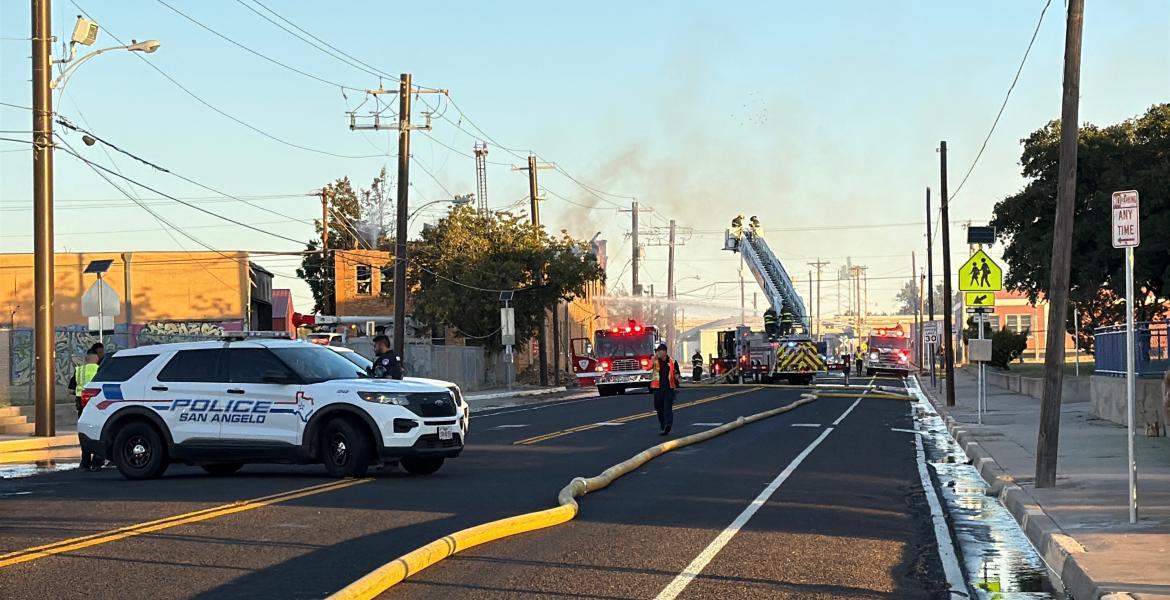GRAPE CREEK, TX -- Grape Creek Independent School District Superintendent Angie Smetana wrote a letter to parents and the Grape Creek community Thursday after the Texas Education Agency released accountability ratings for Texas schools. Grape Creek got a D. Here is the letter:
Dear Grape Creek Parents/Guardians, and Community,
The Texas Education Agency has released the 2018 A-F Accountability ratings for the school districts and campuses from across the state of Texas. The Grape Creek Independent School District campuses, under this rating, have received either a "Met Standard" or an "Improvement Required" rating instead of a letter grade. School districts received a letter grade of A, B, C, D, or F. The purpose of this letter is to inform you that Grape Creek ISD received a letter grade of D with a score of 69. In addition, the Primary/Intermediate scored a 71 and received an official Met Standard rating, the Middle School campus received a score of 51 and received an official Improvement Required rating, and the High School campus scored an 81, and received an official Met Standard rating.
The A-F Accountability Rating System gives school districts and campuses a rating based on how students perform on a test that is administered on a specified day during the school year and is a standardized test. While most of us understand that individuals learn and grow at various rates, the concept of standardized testing groups students within a certain area of expectation. This has proven to be very difficult for low socioeconomic students, students that are served within our ESL programs, and students of various minority groups. The 2017-2018 Accountability worked toward addressing this issue by taking economically-disadvantaged students into consideration and looking at growth of students and closing educational gaps; however, the overall concept of one standardized measure for all students remains in place.
August 2018 concludes my second year as the Superintendent at Grape Creek ISD. During this time our outstanding board of trustees, administrative staff, directors, district staff, parents, and community have been able to come together, and support one another, in making the necessary changes toward reaching our goals set by our leadership teams and campus committees. This plan is constantly being monitored, looked at, revised, updated, and dissected to ensure that it remains valid and meets the needs of our students. While Grape Creek ISD has been able to make substantial improvements including the huge gains in student achievement at the Elementary and High School campuses made over last year, we are not anywhere near where we want to be.
The Grape Creek ISD family works incredibly hard to look beyond the academics. All staff members, understand that there are numerous factors that affect a child's academic success. It is Grape Creek ISDs mission to serve the whole child caring for each student socially, emotionally, physically, and mentally while maintaining a priority of continual progress. We are absolutely not satisfied with our rating and performance, and will continue to tirelessly work toward improving and adjusting our instructional strategies and programs to best fit the needs of our students. We view Accountability scores as an opportunity to gain additional data about our students and our instructional programming, and utilize the information as a tool to assist us in our quest toward continual improvement in the education of our amazing students. If you have any questions concerning this report, please feel free to contact my office at 325-658-7823, ext. 1000. Thank you for your support.
Subscribe to the LIVE! Daily
Required






Comments
Listed By: Old Salt
Unbelievable. Some are hard to teach. And not everyone is college material, but these ratings are based on basics. "The test" already lowers the bar, a D throws it aside.
- Log in or register to post comments
PermalinkListed By: Martin Farris
TEA's ratings are utter and total garbage. It's been recognized for a long time that you can predict how a group of students are going to perform on a standardized test knowing little more than the income level of their household, so comparing Grape Creek, which is around 75% economically disadvantaged students, with Wall, which is around 15% economically disadvantaged students, without adjusting for that factor is just dumb. I could have saved them the time and expense of testing and just assigned the grades based on the % of students in each district that are economically disadvantaged (which TEA conveniently removed from the report this go around making it more work to uncover their subterfuge), and come up with the same grades they did without ever looking at a test score.
Here is a sample:
Christoval "B" approx 25% economically disadvantaged
Grape Creek "D" approx 75%
SAISD "C" approx approx 60%
Wall "A" approx 15%
Veribest "B" approx 45%
Let me simplify this for you. If you want your kid in an "A" rated school district, just move to an area that is devoid of poor families. The schools aren't actually better, but since the state refuses to properly account for that important factor you'll think they are. If they were to assign the ratings correctly you would find that SAISD and the adjoining ISD's are basically all average, so there is no reason to bankrupt yourself moving to a higher rated school district.
- Log in or register to post comments
PermalinkListed By: sanglo expat
Sir:
What would you suggest as a more effective way of evaluating school performance? The goal for any school, after all, is producing highly performing kids capable of moving forward and dealing competently with life whether it be with higher education in productive areas or developing skills that make them fully capable of earning a living.
Again, what would you suggest?
- Log in or register to post comments
PermalinkListed By: Martin Farris
The solution isn't that difficult, they need to adjust their ratings for the demographics of the school districts. If this site allowed us to post images, this would be easier. TEA's current ratings ignore the % of economically disadvantaged students in each district, so nearly all the school districts with less than 20% economically disadvantaged students wind up rated either A or B. Conversely, the vast majority of districts with more than 80% economically disadvantaged students wind up rated D or F. This isn't measuring the performance of the school, it's just rewarding or penalizing them for the demographics of the population in their district, which is nothing they have any control over.
I wish I could post the chart from the previous ratings that shows the district score in relation to the % of economically disadvantaged students in that district. It shows a very clear correlation between test scores and % economically disadvantaged students. Yet TEA insists on ignoring that.
If you plot Wall ISD on that chart you will see that though their score is high, when compared to other districts with similarly low %'s of economically disadvantaged students they are decidedly average, which would normally be a grade of C, not A. If you do the same for SAISD, you find that they are also pretty much in the middle of the pack when compared to similar districts. In fact, all the local districts would have graded out as C if TEA assigned their ratings correctly.
Last time they literally had districts with nearly no economically disadvantaged students and scores 20 points below the average for similar schools rated as a B. I'm sorry, but those districts should have been rated as failing. There were about 50 districts in the state with less than 20% economically disadvantaged students, yet the bottom 5 (10%) of them were still rated as B districts? If you're in the bottom 10% of your peers you are failing, not doing above average. Your school is almost entirely little rich white kids, and your achievement scores are in the low 50's? Then TEA rates you a B. Shameful.
On the other end of the scale you have districts that are rated as D or F that are actually doing much better than their peers and should be rated as A or B. If the average district with 80% or more economically disadvantaged students scores a 35, then shouldn't a score of 35 rate a C for those schools instead of a F? Shouldn't the top 10% of those schools be A rated instead of C?
As a parent looking at these ratings I want to know if the students graduating from that district/school are doing better than expected or worse. That is what really determines if the school is failing or succeeding. The current rating system is the same as comparing the scores of golfers who play 18 holes on a course that is par 54 with those who played one that is par 72. Those guys who carded a 60 on the first course look awesome compared to the ones who turned in a 68 on the second course until you realize the first group shot 6 over par while the second group was 4 under...
- Log in or register to post comments
PermalinkPost a comment to this article here: